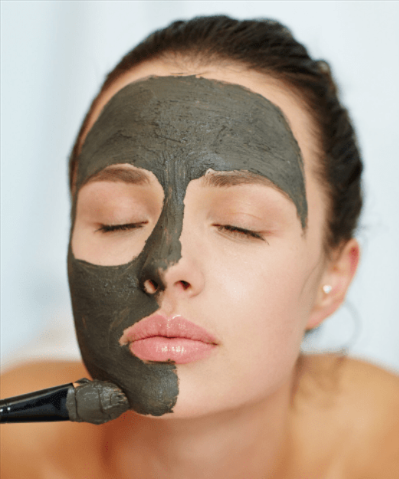Ptosis, or drooping of the upper eyelid, is a common condition that can affect one or both eyes. While surgery (such as blepharoptosis correction) is the definitive treatment for moderate to severe cases, many medical tourists traveling to Korea are interested in non-surgical ways to manage ptosis, especially if they are not ready or eligible for surgery.
Fortunately, South Korea is at the forefront of aesthetic and therapeutic eye care, offering advanced non-invasive treatments, high-quality skincare technologies, and integrative therapies that can help alleviate mild ptosis symptoms, enhance eye appearance, and improve eyelid function.
If you’re a medical tourist visiting Korea and looking for alternatives to surgery, this guide outlines safe and effective non-surgical ptosis management options available in the country.
👁️ What Is Ptosis?
Ptosis refers to a condition where the upper eyelid droops over the eye. It may be:
- Congenital (present at birth)
- Acquired (age-related, nerve-related, trauma-induced, or from contact lens overuse)
Symptoms of ptosis may include:
- Heavy or tired-looking eyes
- Uneven eyelid height
- Difficulty keeping the eyes open
- Impaired vision in severe cases
For mild to moderate cases, non-surgical management may offer cosmetic and functional relief.
🇰🇷 Why Korea Is Ideal for Non-Surgical Ptosis Management
South Korea offers a unique combination of:
- Advanced aesthetic clinics and eye centers
- K-beauty innovations targeting eyelid and eye fatigue
- Non-invasive technologies like lasers, RF, and neuromodulators
- Experienced dermatologists and oculoplastic specialists
Medical tourists benefit from high-quality care, affordable prices, and short recovery times—perfect for those on a limited travel schedule.
🔍 Non-Surgical Ptosis Management Options in Korea
1. Botulinum Toxin (Botox) for Ptosis Correction
In select cases of mild ptosis, targeted Botox injections can lift the brow or adjust the position of the levator muscle, providing a temporary lift to the eyelid.
- Best for: Minor asymmetry, eyebrow drooping, or pseudo-ptosis
- Duration: 3–4 months
- Clinic Types: Dermatology clinics, aesthetic centers
- Downtime: Minimal
💡 Clinics like Banobagi Dermatology and View Plastic Surgery offer Botox for eye rejuvenation with artistic precision.
2. Non-Surgical Thread Lift (Eye or Brow Lift Threads)
Korea is known for its PDO and PLLA thread lifting techniques, which can provide a subtle mechanical lift to the outer brow and upper eyelid skin.
- Best for: Mild drooping or sagging near the brow
- Procedure Time: 30–45 minutes
- Results Last: 6–12 months
- Recovery: Minor swelling or bruising (1–3 days)
Thread lifting is commonly available at multi-specialty clinics like Regen, The Plus, and 1mm Plastic Surgery.
3. High-Intensity Focused Ultrasound (HIFU) for Upper Eye Area
HIFU technology, such as Ultraformer III or Doublo Gold, delivers thermal energy to tighten the SMAS layer around the eye.
- Lifts the brow and upper eyelid region
- Non-invasive with no downtime
- Visible results in 2–4 weeks
- Sessions needed: 1–2 per year
💡 Offered at top dermatology clinics like Oracle, ID Dermatology, and Banobagi Skin Clinic.
4. Radiofrequency (RF) and Thermage FLX Eye Treatments
RF-based devices such as Thermage FLX are popular in Korea for rejuvenating sagging eyelids and stimulating collagen.
- Targets eyelid and brow area without incisions
- Smooths fine lines and mildly lifts skin
- No recovery time needed
- Results improve over 2–3 months
Especially recommended for medical tourists who want natural-looking eye rejuvenation without surgery.
5. Exosome and Growth Factor Injections
Exosome therapy is one of Korea’s newest regenerative offerings, providing anti-aging and tissue repair benefits.
- Can be injected around the periorbital area to revitalize tired eyes and improve skin elasticity
- May enhance upper eyelid tone over time
- Often combined with microneedling or laser
Clinics like Onlif Plastic Surgery and G Clinic specialize in this cutting-edge anti-aging treatment.
6. Eye Muscle Strengthening Exercises and Neuromuscular Therapy
Some Korean clinics, especially those focused on holistic or rehabilitative eye care, offer eye physiotherapy:
- Manual therapy and EMS (electrical stimulation) to activate levator and frontalis muscles
- Acupressure and massage to reduce eyelid fatigue
- Visual training tools for eyelid coordination
These programs may be useful for early-stage acquired ptosis, particularly from prolonged screen use or contact lens strain.
🛍️ K-Beauty Tools & Products for Ptosis Self-Care
Many Korean beauty brands offer non-invasive solutions that tourists can take home:
- Eye-firming creams with peptides or caffeine
- Microcurrent eye massagers
- Hydrogel eye patches infused with collagen or retinol
- Heated eye masks for fatigue and eye strain
Available at beauty retailers like Olive Young, AHC, and MediCube.
✈️ Tips for Medical Tourists Seeking Ptosis Management in Korea
✅ 1. Book an Online Consultation Before Arrival
Contact your preferred clinic 2–4 weeks in advance. Some offer virtual evaluations to recommend a suitable treatment plan.
✅ 2. Be Honest About Medical History
Disclose past eye surgeries, Botox use, or neurological conditions. It helps doctors tailor a safe, effective approach.
✅ 3. Combine Treatments for Better Results
Many clinics offer combination therapy (e.g., Botox + HIFU + RF) for more visible, natural effects.
✅ 4. Plan for Light Recovery
Even non-surgical options can cause minor swelling or redness. Allow 1–3 days before resuming full activities or flying.
✅ 5. Ask for English Support
Most major clinics in Seoul, Busan, and Daegu have multilingual staff or offer services in English, Chinese, and Japanese.
🧠 When Surgery Might Be Necessary
While non-surgical treatments can temporarily lift and rejuvenate mild to moderate ptosis, more severe cases involving:
- Vision obstruction
- Levator muscle paralysis
- Congenital ptosis in adults
…will likely require surgical correction. Korean oculoplastic surgeons offer procedures such as:
- Levator advancement
- Frontalis sling surgery
- Incisional blepharoptosis repair
However, these surgeries require more planning, downtime, and follow-up, and are not always suitable for short-stay medical tourists.
🌟 Final Thoughts
Korea is one of the few countries in the world that blends medical science, aesthetic precision, and regenerative skincare—making it an ideal place for medical tourists to manage ptosis without going under the knife. Whether you’re seeking a subtle lift, skin tightening, or simply relief from eye fatigue, Korea’s dermatology and plastic surgery clinics offer safe, effective, and non-invasive solutions.
👁️ Interested in Managing Ptosis During Your Trip to Korea?
Book a consultation with a reputable Korean aesthetic clinic and discover your personalized treatment options—no surgery required.




